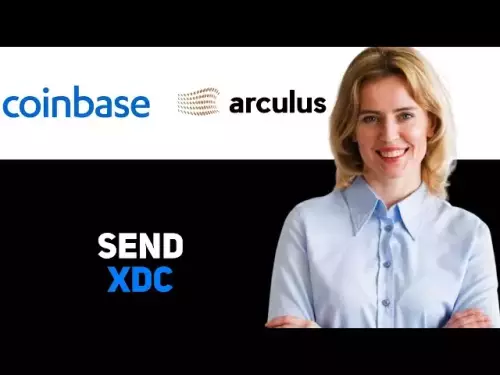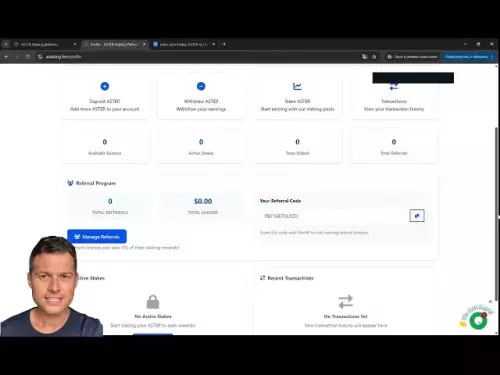-
 bitcoin
bitcoin $111375.742210 USD
-8.60% -
 ethereum
ethereum $3780.311592 USD
-13.98% -
 tether
tether $1.001299 USD
0.07% -
 bnb
bnb $1093.375857 USD
-13.01% -
 xrp
xrp $2.339375 USD
-16.91% -
 solana
solana $185.029017 USD
-16.69% -
 usd-coin
usd-coin $1.000230 USD
0.04% -
 tron
tron $0.319531 USD
-5.16% -
 dogecoin
dogecoin $0.190791 USD
-23.59% -
 cardano
cardano $0.638663 USD
-21.82% -
 ethena-usde
ethena-usde $0.998483 USD
-0.20% -
 hyperliquid
hyperliquid $37.741486 USD
-14.68% -
 chainlink
chainlink $17.229851 USD
-22.17% -
 stellar
stellar $0.316546 USD
-16.74% -
 bitcoin-cash
bitcoin-cash $507.861193 USD
-13.18%
How to choose a reliable APT trading platform? What are the key points of security assessment?
Choose a reliable APT trading platform by evaluating reputation, regulation, security, fees, user experience, and customer support for a secure and efficient trading experience.
May 01, 2025 at 08:15 am

Choosing a reliable APT (Aptos) trading platform is crucial for any cryptocurrency investor looking to trade this promising digital asset. With numerous platforms available, it's essential to evaluate them based on several key factors to ensure a secure and efficient trading experience. This article will guide you through the process of selecting a reliable APT trading platform and highlight the key points of security assessment.
Understanding APT and Its Importance
APT, or Aptos, is a layer-1 blockchain designed to provide a scalable and secure platform for decentralized applications. As with any cryptocurrency, trading APT requires a reliable platform that can handle transactions efficiently and securely. The choice of platform can significantly impact your trading experience, from the fees you pay to the security of your assets.
Key Factors to Consider When Choosing an APT Trading Platform
When selecting an APT trading platform, several factors should be taken into account to ensure you are making a well-informed decision.
Reputation and User Reviews
The reputation of a trading platform is a critical factor. Look for platforms with a strong track record and positive user reviews. Websites like Trustpilot and forums such as Reddit can provide valuable insights into the experiences of other traders. Pay attention to comments about the platform's reliability, customer service, and any issues users have encountered.
Regulation and Compliance
Ensure the platform is regulated by a reputable financial authority. Regulation provides a level of protection for users and indicates that the platform adheres to certain standards of operation. For example, platforms regulated by the Financial Conduct Authority (FCA) in the UK or the Securities and Exchange Commission (SEC) in the US are generally considered more trustworthy.
Security Measures
Security is paramount when dealing with cryptocurrencies. Check if the platform uses advanced security protocols such as two-factor authentication (2FA), cold storage for funds, and encryption. Additionally, look for platforms that have undergone security audits by reputable third-party firms. These audits can provide assurance that the platform's security measures are robust.
Fees and Charges
Trading fees can significantly impact your profitability. Compare the fee structures of different platforms, including trading fees, withdrawal fees, and any other charges. Some platforms offer lower fees for high-volume traders or for using their native tokens. Understanding the fee structure can help you choose a platform that aligns with your trading strategy.
User Interface and Experience
A user-friendly interface can make a significant difference in your trading experience. Evaluate the platform's ease of use, including the layout, navigation, and availability of trading tools. Platforms that offer a demo account or a trial period can be particularly useful for assessing the user experience before committing to a platform.
Customer Support
Reliable customer support is essential, especially when dealing with technical issues or account-related problems. Check the availability and responsiveness of the platform's customer support team. Look for platforms that offer multiple support channels, such as live chat, email, and phone support, and have a reputation for resolving issues promptly.
Key Points of Security Assessment for APT Trading Platforms
Assessing the security of an APT trading platform involves a detailed examination of several key areas. Here are the critical points to consider:
Encryption and Data Protection
Ensure the platform uses strong encryption standards to protect user data and transactions. Look for platforms that use SSL/TLS encryption for secure communication and data protection. Additionally, check if the platform has a clear privacy policy that outlines how user data is handled and protected.
Cold Storage and Wallet Security
Verify if the platform uses cold storage for the majority of user funds. Cold storage keeps funds offline, reducing the risk of hacking. Additionally, check if the platform offers secure wallet options, such as hardware wallets, for users who prefer to manage their own keys.
Two-Factor Authentication (2FA)
Two-factor authentication adds an extra layer of security to user accounts. Ensure the platform supports 2FA and encourages its use. Platforms that offer multiple 2FA options, such as SMS, authenticator apps, and hardware tokens, provide greater flexibility and security.
Security Audits and Compliance
Look for platforms that have undergone regular security audits by reputable third-party firms. These audits can identify vulnerabilities and ensure that the platform's security measures are up to date. Additionally, check if the platform complies with industry standards and best practices for security.
Incident Response and Recovery
Evaluate the platform's incident response plan and recovery procedures. A reliable platform should have a clear plan for responding to security incidents, including steps for notifying users, containing the breach, and recovering lost funds. Check if the platform has a history of handling security incidents effectively.
How to Evaluate and Compare APT Trading Platforms
Evaluating and comparing APT trading platforms involves a systematic approach to ensure you choose the best option for your needs. Here are the steps to follow:
- Research and List Potential Platforms: Start by researching and listing potential APT trading platforms. Use online resources, user reviews, and industry reports to compile a list of platforms that meet your initial criteria.
- Assess Security Measures: Evaluate the security measures of each platform, focusing on encryption, cold storage, 2FA, and security audits. Use the key points of security assessment outlined above to guide your evaluation.
- Compare Fees and Charges: Compare the fee structures of the shortlisted platforms. Consider trading fees, withdrawal fees, and any other charges that may apply. Calculate the potential impact of these fees on your trading profitability.
- Evaluate User Experience: Test the user interface and experience of each platform. If possible, use demo accounts or trial periods to assess the platform's ease of use and the availability of trading tools.
- Check Customer Support: Contact the customer support teams of the shortlisted platforms to assess their responsiveness and effectiveness. Look for platforms that offer multiple support channels and have a reputation for resolving issues promptly.
- Make a Final Decision: Based on your evaluation, choose the platform that best meets your criteria for security, fees, user experience, and customer support. Consider your trading goals and preferences when making your final decision.
Frequently Asked Questions
Q: Can I trade APT on multiple platforms simultaneously?Yes, you can trade APT on multiple platforms simultaneously. However, managing multiple accounts can be complex, so ensure you have a clear strategy and can monitor your trades effectively across different platforms.
Q: How often should I review the security of my chosen APT trading platform?It's advisable to review the security of your chosen APT trading platform at least quarterly. Regular reviews can help you stay informed about any changes in the platform's security measures and ensure your assets remain protected.
Q: Are there any specific tools or resources I can use to monitor the performance of an APT trading platform?Yes, several tools and resources can help you monitor the performance of an APT trading platform. Websites like CoinGecko and CoinMarketCap provide real-time data on trading volumes, fees, and user reviews. Additionally, trading journals and analytics tools can help you track your own performance on the platform.
Q: What should I do if I encounter a security issue on my APT trading platform?If you encounter a security issue on your APT trading platform, immediately contact the platform's customer support team. Follow their instructions for securing your account and report any suspicious activity. Additionally, consider moving your funds to a secure wallet until the issue is resolved.
Disclaimer:info@kdj.com
The information provided is not trading advice. kdj.com does not assume any responsibility for any investments made based on the information provided in this article. Cryptocurrencies are highly volatile and it is highly recommended that you invest with caution after thorough research!
If you believe that the content used on this website infringes your copyright, please contact us immediately (info@kdj.com) and we will delete it promptly.
- Bittensor (TAO): Super Bullish Signals Point to Potential 2x Rally
- 2025-10-11 10:25:12
- Silver Price Correction: Navigating the Dip & Identifying Key SEO Keywords
- 2025-10-11 10:25:12
- MoonBull: The Crypto Meme Coin Promising 1000x Gains?
- 2025-10-11 10:30:01
- Crypto Payroll Revolution: Stablecoins, Altcoins, and the Future of Salary Payments
- 2025-10-11 10:30:01
- Decoding Crypto Trends: XRP's Bitcoin Dream, BlockDAG's Rise, and the PayFi Revolution
- 2025-10-11 10:30:01
- Amina Bank & Polygon: Institutional Staking with a Sweet 15% Yield
- 2025-10-11 10:30:15
Related knowledge

Practical parameter settings for a Bitcoin multi-timeframe moving average system
Sep 18,2025 at 10:54pm
Optimizing Timeframe Combinations for Bitcoin Trading1. Selecting appropriate timeframes is crucial when building a multi-timeframe moving average sys...

How can I filter out false breakouts in Dogecoin high-frequency trading?
Sep 22,2025 at 01:00am
Understanding False Breakouts in Dogecoin Trading1. A false breakout occurs when Dogecoin's price appears to move beyond a defined support or resistan...

Techniques for identifying tops and bottoms in the Bitcoin on-chain NVT model
Sep 20,2025 at 07:54pm
Understanding the NVT Model in Bitcoin Analysis1. The Network Value to Transactions (NVT) ratio is often described as the 'P/E ratio' of the cryptocur...

What does the surge in open interest in Bitcoincoin futures mean?
Sep 20,2025 at 11:18pm
Understanding the Surge in Dogecoin Futures Open Interest1. A surge in open interest within Dogecoin futures indicates a growing number of active cont...

How can I use the Ethereum USDT premium to gauge market sentiment?
Sep 18,2025 at 11:55pm
Understanding the Ethereum USDT Premium1. The Ethereum USDT premium refers to the price difference between USDT (Tether) traded on Ethereum-based plat...

What should I do if Ethereum staking yields decline?
Sep 20,2025 at 06:18am
Understanding the Causes Behind Declining Ethereum Staking Yields1. The Ethereum network transitioned to a proof-of-stake consensus mechanism with the...

Practical parameter settings for a Bitcoin multi-timeframe moving average system
Sep 18,2025 at 10:54pm
Optimizing Timeframe Combinations for Bitcoin Trading1. Selecting appropriate timeframes is crucial when building a multi-timeframe moving average sys...

How can I filter out false breakouts in Dogecoin high-frequency trading?
Sep 22,2025 at 01:00am
Understanding False Breakouts in Dogecoin Trading1. A false breakout occurs when Dogecoin's price appears to move beyond a defined support or resistan...

Techniques for identifying tops and bottoms in the Bitcoin on-chain NVT model
Sep 20,2025 at 07:54pm
Understanding the NVT Model in Bitcoin Analysis1. The Network Value to Transactions (NVT) ratio is often described as the 'P/E ratio' of the cryptocur...

What does the surge in open interest in Bitcoincoin futures mean?
Sep 20,2025 at 11:18pm
Understanding the Surge in Dogecoin Futures Open Interest1. A surge in open interest within Dogecoin futures indicates a growing number of active cont...

How can I use the Ethereum USDT premium to gauge market sentiment?
Sep 18,2025 at 11:55pm
Understanding the Ethereum USDT Premium1. The Ethereum USDT premium refers to the price difference between USDT (Tether) traded on Ethereum-based plat...

What should I do if Ethereum staking yields decline?
Sep 20,2025 at 06:18am
Understanding the Causes Behind Declining Ethereum Staking Yields1. The Ethereum network transitioned to a proof-of-stake consensus mechanism with the...
See all articles










































































